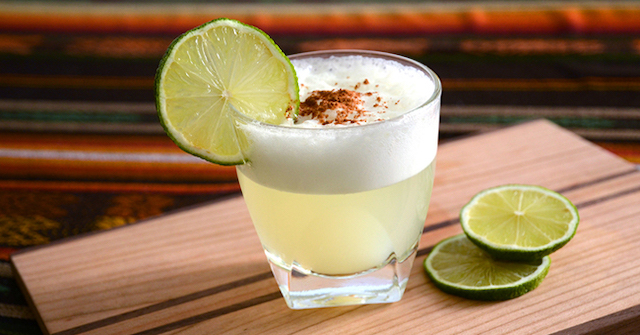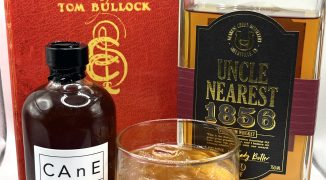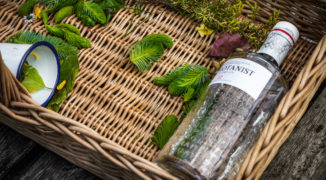We drink with both our mouth and our eyes, so finding an element that enhances both the flavor profile and visual appeal of a cocktail is important. Foam certainly falls into that category, but its complexity – and the effort required to create it – makes it a sometimes underutilized ingredient.
“Foam should complement, contrast, enhance or balance flavors in a drink,” says Edwin Cruz, beverage director at Los Angeles-based Winsome. “When it comes to taste, a foam should never overpower or be the highlight of the cocktail. Rather, it should serve a purpose. As far as visual appeal, foams add dimension to cocktails, elevating their appearance, adding height, and in a lot of cases, contrasts in color.”
How to create cocktail foam
You can employ several strategies and various ingredients when creating foam. Egg white happens to be one of the oldest and most commonly used foaming ingredients, though, so we’ll start there.
“This strategy has been around since the golden era of cocktails,” says Jason Jeffords III, beverage director at The Ribbon NYC. “You simply add the egg white of an organic egg – you cannot use pasteurized eggs – to a cocktail and dry shake.”
A dry shake, he explains, is when you shake without ice. The absence of ice allows the ingredients to better emulsify. Jeffords says to aggressively dry shake and then add ice to chill and dilute.
Do note that egg foam will add a creamy, velvety mouth feel to your drink, but won’t do a ton by way of flavor.
“You will want to make sure that the foam is topped with some type of aromatic component, as the egg white can smell unpleasant,” says Jeffords. “A lot of times I see bartenders create beautiful designs on top of the egg white foam. Although beautiful, they unfortunately do not always mask the egg white smell. It is very important to direct the aromatic component directly in the center where the consumers nose will be most affected by the aromatics added.”
Another foaming technique is to use gelatin with a whipping siphon, two items will allow you to foam just about anything your heart desires.
“Gelatin is a colorless and flavorless thickening agent derived from animal collagen,” explains Jeffords. “The important thing to know when using this technique is the type of foam you are looking to create. The quality and amount used will determine what kind of foam you ultimately produce.”
Because there’s no general blueprint for how much gelatin to add to your other ingredients when creating foam, it’s best to put on your lab coat and experiment behind the bar for a bit. Don’t be afraid to utilize interesting flavors, either. Herbs, beer, champagne, flowers, tobacco, fruits, vegetables and more can all enhance the flavor profile of your cocktail.
For example, Cruz creates a really easy, lightweight foam with sea salt and vinegar – two unexpected ingredients that can really elevate a drink.
“For this, the vinegar has been allowed to sit with shallots and cherry tomatoes. This ‘pickling liquid’ can then be whipped to create a beautiful, flavorful air that can sit atop a martin, adding a depth of umami to a very savory gin,” he says.
Another example from Cruz is a prickly pear foam. He says he poaches the prickly pear with sugar and water to release all of the flavor and then adds orange zest and cardamom. The liquid is then foamed with versawhip (an egg white and gelatin substitute made from modified soy protein) and paired with a bright, tart cocktail that utilizes Winsome’s in-house falernum and rum.
Perfecting your foam
Cruz refers to foam as a “visual calling card” to your guests that says, “order me.” There’s an art to creating pretty, Instagram-worthy foam, though, and it starts with quality ingredients and proper know-how.
Keep it cold
“There’s nothing worse than a poorly set foam,” says Cruz. “The number one tip I have is to keep it cold. I’ve seen whipping siphons sitting out and I cringe, since every minute that passes warms up the charged liquid, breaking up the bonds that hold the foam together.” As soon as you finish using your siphon, put it back into the fridge or into an ice bath.
Take your time
Channel your inner tortoise when it comes to creating cocktail foam and you’ll win the race. In other words: good foam cannot be rushed. “If not given enough time to dissolve, sheet and powdered gelatin will clump, resulting in runny foam,” explains Cruz. “Take the time to prepare the ingredients in your foam and allow them time to cool down.”
Aim for purity
If you’re foaming fresh fruits and juices, avoid solid particles. You can do this by poaching fruits and vegetables to extract their essence, or by passing fresh-pressed or squeezed juices through a strainer or cheesecloth. The purer and thinner the liquid, the finer the foam.
Know your stabilizers
“Stabilizers are what’s going to keep your foam or air bubbles together,” notes Cruz. “They serve as thickening and gelling agents in the liquid. It’s important to experiment until you find the right ratio for the texture you’re trying to create.”
For example, if you want a light and airy foam with lots of little bubbles, using lecithin or versawhip at a .5 to .75 percent ratio is best, he says. Contrarily, if you’re aiming for a thick foam that creates stiff peaks, use egg whites and gelatin while keeping the gelatin at about .75 percent ratio.
“The key is patience and experimentation,” he says. “As a rule of thumb, the more dense or thick your ingredients are, the more stabilizing they will need.”





